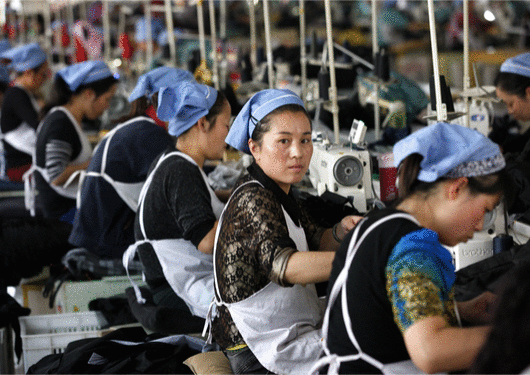
Visit Our Sponsors |
|
|
|
|
|
|
|
|
|
|
|
|
|
|
|
|
|
|
|
|
|
|
|
|
|
|
|
|
|
|
|
|
|
|
|
|
|
|

China bulls could be forgiven for some self-congratulatory back-patting these days. The country's gross domestic product expanded 6.9 percent in the first three months of the year, the fastest rate since the third quarter of 2015. China is showing "marked improvement in economic performance, and major economic indicators have continued to move in a positive direction," Premier Li Keqiang told global business leaders at a World Economic Forum meeting in Dalian last month.
But one key indicator — total factor productivity — gives a more worrisome picture of China’s economic health. Total factor productivity is the extra output that the economy produces without additional labor or capital — it’s what creates prosperity. While productivity in the manufacturing industry grew an average of 2.6 percent a year from 1998 to 2007, growth has been almost zero since, according to Loren Brandt, a China specialist at the University of Toronto. In the U.S., by contrast, productivity growth fell from 1 percent to about 0.5 percent over the same period, he says.
It isn’t unusual for productivity to slow once the easy gains that come from industrialization, the development of supply chains, and the embrace of technologies such as computers are used up. “You would expect productivity to come down, but not as sharply as we’re seeing” in China, Brandt says.
So what explains the dramatic drop? There’s a pretty obvious culprit. To combat the effects of the global financial crisis, China unleashed a 4tr-yuan ($586bn) stimulus program in 2008, much of it directed at state-owned enterprises (SOEs), to prop up growth and avoid mass layoffs. While the spending helped China avoid a deep slump, the focus on SOEs hurt the private sector. Today, state companies get almost 30 percent of all loans but contribute less than a tenth of GDP, according to Gavekal Dragonomics, a Beijing-based economic consulting firm.
RELATED CONTENT
RELATED VIDEOS
Timely, incisive articles delivered directly to your inbox.






